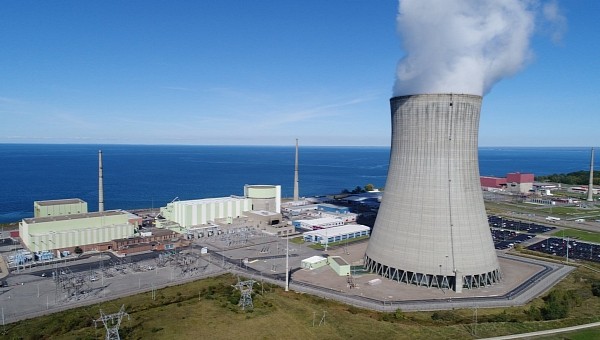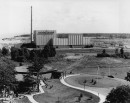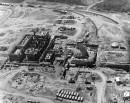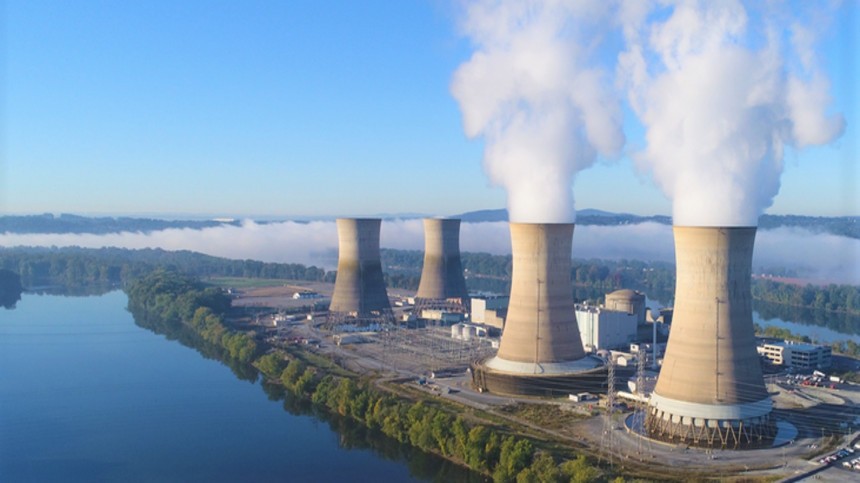We tend to look fondly at machines that stand the test of time. Things like cars, trucks, and motorcycles that last 40, 50, or even 60 years or more can justifiably be called classics. But nuclear reactors? That's a whole different ballgame. Nuclear reactor facilities as old as the hills give some people a fair bit of anxiety. But so far, America's oldest operating fission reactor hasn't had a single major accident.
This is the story of the Nine Mile Point Nuclear Generating Station. One of New York State's least appreciates technological triumphs. In a region of the state that seldom receives its due attention, the twin reactors on the site of Nine Mile Point are a point of pride that we think deserves a closer look. As you'll find, the idea that nuclear reactors are perpetually on the verge of melting down doesn't have to be the real story.
If anything, a day at the office for any of the 800 or so employees at the facility is much the same as a non-nuclear energy sector engineering job. For almost 60 years, Nine Mile Point supplied vital electricity to regions of Central and Western New York that use this energy to great effect. Tens of millions of megawatt hours are generated at America's oldest operating reactor each year. Its story is one we're often told can't happen in America anymore. A story of real, long-lasting innovation.
At the heart of the Nine Mile Point Nuclear Power Station are two General Electric boiling-water reactors (BWRs) that are part of one of the strongest lineages in all of the nuclear energy. With the first ground broken in 1965 and activated in December 1969, the second-generation General Electric BWR in Nine Mile Point's first reactor produced upwards of 1530 megawatts of thermal energy and up to 650 megawatts of useable electricity.
As one of the first second-generation nuclear reactors activated in the United States, the Nine Mile Point BWRs represented a quantum leap in energy production for New York State. Consisting of a large metal outer shell with graphite-moderated nuclear fuel rods arranged into a core on the inside, the flow of water through fissile uranium isotopes creates a boiling effect that can be captured by pipes and directed towards a series of turbines generating electricity.
In gen-II GE BWRs specifically, its integrated water pumps can send between 6,400 to 32,000 U.S.-standard gallons of purified, distilled water per minute (0.40 to 2.02 m3/s)) through the reactor core as it buzzes away with ionized fissile neutrons. Nine Mile Point's first reactor operated alone until 1979 when a second reactor unit consisting of an upgraded fifth-gen General Electric BWR system with more efficient, variable-speed water pumps to keep water flowing as quickly or slowly as needed.
Nine Mile Point's second reactor is capable of producing up to 1,375 MW of useable electricity on top of considerably more thermal power. That's more than double the energy-generating capacity of the plant's first reactor, and it puts the facility firmly among the most important power-generating stations in all of New York State. Meanwhile, at the nearby and separate James A. FitzPatrick (JAF) Nuclear Power Plant, a single General Electric BWR-4 reactor whirrs away independently of the twin Nine Mile Point reactors while being actively cooled by Lake Ontario.
Being one of four nuclear reactor facilities located on the banks of the mighty Lake Ontario, it makes the region one of the most important nuclear energy-generating sights in all of North America. In a joint partnership between the Constellation Energy corporation and the Long Island Power Authority, the two Nine Mile Point complex plus the JAF Plant represent one of the largest fission complexes in the Northeastern United States.
It goes without saying not every fission reactor is like the RBMK 1500 that exploded in reactor four at Chornobyl (Chernobyl). But that doesn't mean it's not also easy to conjure images of radiation sickness, nuclear meltdowns, and general nightmare fuel when imagining nuclear power stations in their mind's eye. Interestingly enough, General Electric BWRs are known to operate for decades at a time without incident.
In fact, no nuclear meltdowns not directly attributable to natural disasters out of humanity's control have ever been attributed to the design. Of course, this incident was the Fukushima Daiichi incident of 2011. But that's not to say Nine Mile Point hasn't had any incidents before. On August 13th, 1991, the Nine Mile Point facility had a sudden loss of power to the reactor and control room incident, which caused the reactors to be temporarily shut down.
No injuries were reported, and no breaches of radiation containment were identified before the plant was reactivated. Thus proving that not every nuclear accident winds up becoming the next Chornobyl. To this day, Nine Mile Point continues to buzz away with nuclear energy. In spite of efforts by anti-nuclear groups to get the plant shut down. That's likely not happening any time soon.
If anything, a day at the office for any of the 800 or so employees at the facility is much the same as a non-nuclear energy sector engineering job. For almost 60 years, Nine Mile Point supplied vital electricity to regions of Central and Western New York that use this energy to great effect. Tens of millions of megawatt hours are generated at America's oldest operating reactor each year. Its story is one we're often told can't happen in America anymore. A story of real, long-lasting innovation.
At the heart of the Nine Mile Point Nuclear Power Station are two General Electric boiling-water reactors (BWRs) that are part of one of the strongest lineages in all of the nuclear energy. With the first ground broken in 1965 and activated in December 1969, the second-generation General Electric BWR in Nine Mile Point's first reactor produced upwards of 1530 megawatts of thermal energy and up to 650 megawatts of useable electricity.
As one of the first second-generation nuclear reactors activated in the United States, the Nine Mile Point BWRs represented a quantum leap in energy production for New York State. Consisting of a large metal outer shell with graphite-moderated nuclear fuel rods arranged into a core on the inside, the flow of water through fissile uranium isotopes creates a boiling effect that can be captured by pipes and directed towards a series of turbines generating electricity.
Nine Mile Point's second reactor is capable of producing up to 1,375 MW of useable electricity on top of considerably more thermal power. That's more than double the energy-generating capacity of the plant's first reactor, and it puts the facility firmly among the most important power-generating stations in all of New York State. Meanwhile, at the nearby and separate James A. FitzPatrick (JAF) Nuclear Power Plant, a single General Electric BWR-4 reactor whirrs away independently of the twin Nine Mile Point reactors while being actively cooled by Lake Ontario.
Being one of four nuclear reactor facilities located on the banks of the mighty Lake Ontario, it makes the region one of the most important nuclear energy-generating sights in all of North America. In a joint partnership between the Constellation Energy corporation and the Long Island Power Authority, the two Nine Mile Point complex plus the JAF Plant represent one of the largest fission complexes in the Northeastern United States.
It goes without saying not every fission reactor is like the RBMK 1500 that exploded in reactor four at Chornobyl (Chernobyl). But that doesn't mean it's not also easy to conjure images of radiation sickness, nuclear meltdowns, and general nightmare fuel when imagining nuclear power stations in their mind's eye. Interestingly enough, General Electric BWRs are known to operate for decades at a time without incident.
No injuries were reported, and no breaches of radiation containment were identified before the plant was reactivated. Thus proving that not every nuclear accident winds up becoming the next Chornobyl. To this day, Nine Mile Point continues to buzz away with nuclear energy. In spite of efforts by anti-nuclear groups to get the plant shut down. That's likely not happening any time soon.












